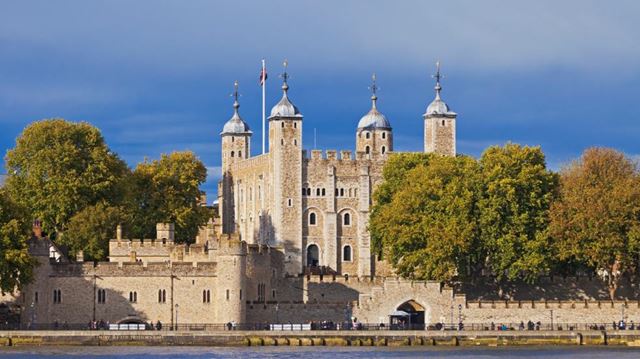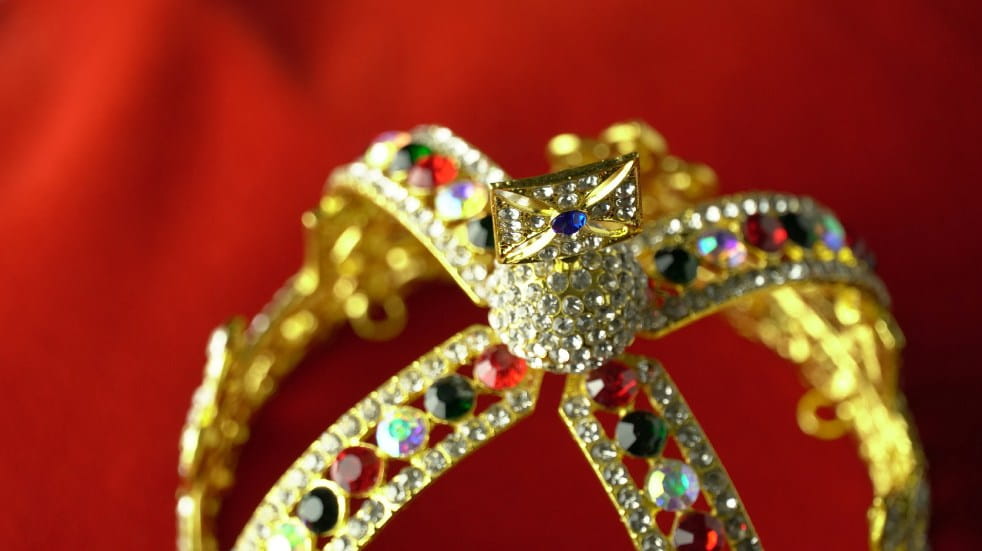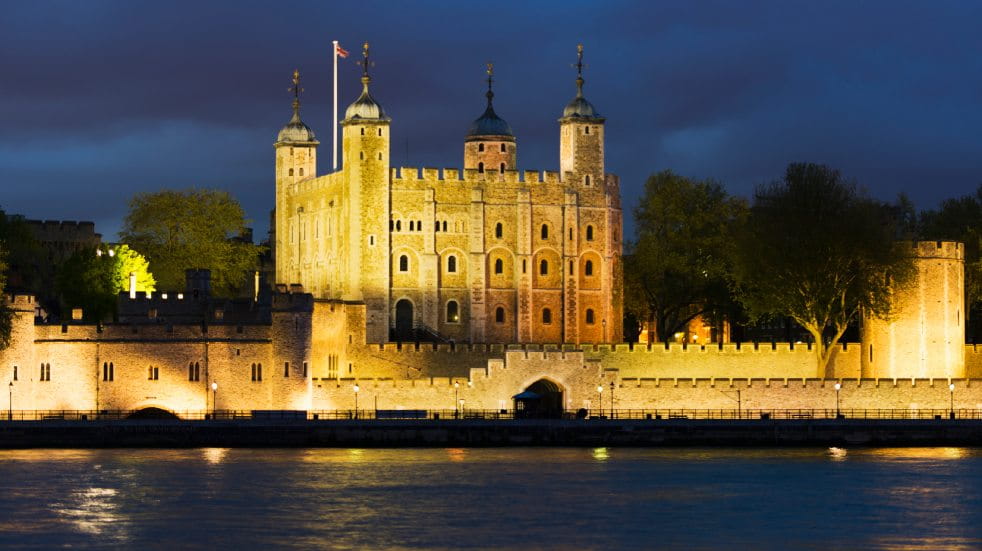
From ravens to the Royal Armoury, find out what you can see and do at the Tower of London, one of the UK’s top attractions
If you’re planning a trip to England’s capital, then the Tower of London should definitely be on your itinerary. One of the UK’s most popular tourist attractions, this World Heritage Site is packed with things to see and do, making it a must-visit destination for people of all ages.
Located on the north bank of the River Thames, in the heart of the City district, the Tower of London has played a pivotal role in English history. Founded in 1066 as part of the Norman Conquest, it’s served as a fortress, a palace and a headquarters for the Royal Mint. For centuries, it was also used as a state prison, and some of the stories emanating from its walls – of bloody executions and unexplained disappearances – are sure to send a shiver down your spine. Of course, the Tower of London is also home to the world-famous Crown Jewels, a beguiling collection of precious objects that’s been used by a succession of British Kings and Queens.
In our historic travel guide, we’ll give you the full lowdown on what’s inside the Tower of London, so that you can make the most of your visit.
And did you know that Boundless Plus members receive unlimited entry to the Tower? It’s one of the benefits offered by Boundless Plus partner, Historic Royal Palaces. You can find out more about the Boundless membership options here.
Tower landmarks and structures
Iconic attractions are in abundance at the Tower of London, so plan your day carefully to ensure that you don’t miss out on any of them.

Crown Jewels
Displayed at the Tower of London since 1661, the Crown Jewels are a dazzling collection of royal regalia used in various ceremonial events over the centuries. Highlights include the Imperial State Crown worn by King Charles during his 2023 Coronation and containing a precious stone said to have formed part of Henry V’s helmet at the Battle of Agincourt; the Crown of Elizabeth the Queen Mother, which features one of the world’s most iconic diamonds, the Koh-i-Noor; and the Sovereign’s Sceptre, made for Charles II’s 1661 Coronation and used at every Coronation since.
White Tower
Commissioned in 1066 by William the Conqueror but completed around 1100 under the reign of Henry I, the Tower of London’s iconic stone keep was meant not only to intimidate potential invaders but also to subdue local citizens. Nowadays, it contains the fascinating Royal Armouries collections, which include a wide range of historic weapons, along with armour worn by Henry VIII, Charles I and James II. On the top floor, you’ll find the wondrous Chapel of St John the Evangelist, a worshipping place for medieval kings and queens, not to mention an 18th-century executioner’s block!
Tower ravens
According to legend, Charles II was warned that his kingdom would fall if the six ravens resident at the Tower of London should ever leave, and as a consequence he insisted they be protected. This was much to the annoyance of the King’s astronomer, who felt that the birds would interfere with his business. To this day, six ravens – albeit different ones – keep watch over the Tower from their lodgings on the South Lawn. Named Jubilee, Harris, Poppy, Georgie, Edgar, Branwen and Rex, their diet includes mice, rats, raw meats and the occasional blood-soaked biscuit.
Medieval Palace
In the 13th century, Henry III and, latterly, his son Edward I oversaw the construction of some royal lodgings within the Tower of London. Primarily located inside St Thomas’s Tower, the Wakefield Tower and the Lanthorn Tower, these living quarters were both spacious and luxurious – though they were never intended for long-term use. Fast-forward to the 21st century and the lodgings have been recreated for modern visitors and renamed the Medieval Palace. Containing everything from Edward I’s bedchamber to authentically reproduced wall paintings, it’s a perfect opportunity to see how the other half lived.
Royal Mint
For over 500 years – beginning at the end of the 13th century – the vast majority of coins in England were manufactured by the Royal Mint at its factory inside the Tower of London. Not only were conditions hot and cramped, but the work was also very dangerous – staff would frequently lose a finger or an eye, and anyone caught stealing or forging was likely to have their hand cut off or worse. Though the Royal Mint moved to nearby premises in 1812, and eventually relocated to Wales, you can discover the full story of this fascinating period in an interactive exhibition inside the Tower of London.
Tower of London prisoners
From Anne Boleyn to Sir Walter Raleigh, numerous high-profile people have been incarcerated inside the Tower of London – and many of them didn’t make it out…

Tower Green and Scaffold Site
It may look serene today, but Tower Green would once have resonated with the screams of those condemned to die. Popular or high-ranking people were generally executed inside the Tower itself, as the State didn’t want to attract the attention of their supporters. Everyone else was herded towards Tower Green to face the sword or axe. Among those sentenced to death were two of Henry VIII’s six wives – Anne Boleyn and Catherine Howard – and ‘the Nine Days Queen’, Lady Jane Grey. The latter was just 16 years old at the time of her beheading.
As you walk across Tower Green, look out for the famous Yeoman Warders. Also known as ‘Beefeaters’, this esteemed troop has been guarding the Tower of London since Tudor times.
Bloody Tower
The Tower of London’s most notorious jail, the Bloody Tower housed a number of prominent prisoners over the years, including two Archbishops of Canterbury and, prior to his execution, Sir Walter Raleigh. But the Tower’s most infamous inhabitants were undoubtedly the two young princes, Edward V, 12, and his nine-year-old brother Richard. Upon their father Edward IV’s death, the two boys fell into the care of their uncle, the Duke of Gloucester (later Richard III), who housed them in the Bloody Tower, supposedly for their protection. However, they were never seen again, and their fate remains a mystery to this day. You can find out more about the princes’ disappearance – and also discover Raleigh’s study and lost garden – by exploring this iconic turret as part of your visit.
Beauchamp Tower
Built in the late 13th century by King Edward I, the Beauchamp Tower forms part of the Tower of London’s inner defensive wall. Over the centuries, it housed a series of high-ranking prisoners; indeed, the Tower is named after the first of those – Thomas Beauchamp, Earl of Warwick, who was imprisoned for rebelling against Richard II. To keep themselves occupied, some prisoners carved graffiti into the stone walls – and incredibly, much of it is easily visible today, providing a poignant reminder of lives lost.
Opening times
During the spring and summer season (1 March to 31 October), the Tower of London is open Tuesday to Saturday from 9am to 5.30pm, and Sunday and Monday from 9am to 5.30pm during school holidays. In autumn and winter (1 November to 28 February), opening times are Tuesday to Saturday from 9am to 4.30pm, and Sunday and Monday from 10am to 4.30pm. (Last available time slot on each day is at 3.30pm.) The Tower is closed from 24-26 December and on 1 January.
Do more with Boundless
If you're working in or retired from the public sector or civil service, Boundless has two great membership options to choose from: Boundless and Boundless Plus.
With Boundless, you get unlimited access or discounted entry to many of the UK’s top attractions including Kew Gardens and Wakehurst and WWT centres across the UK, as well as year-round deals on restaurants, holidays, shopping and much more. With Boundless Plus, you can enjoy additional benefits including unlimited access to Historic Royal Palaces sites, National Trust for Scotland places, access to the Ramblers' extensive group walks and routes, and peace of mind with roadside assistance and local recovery by LV= Britannia Rescue.





